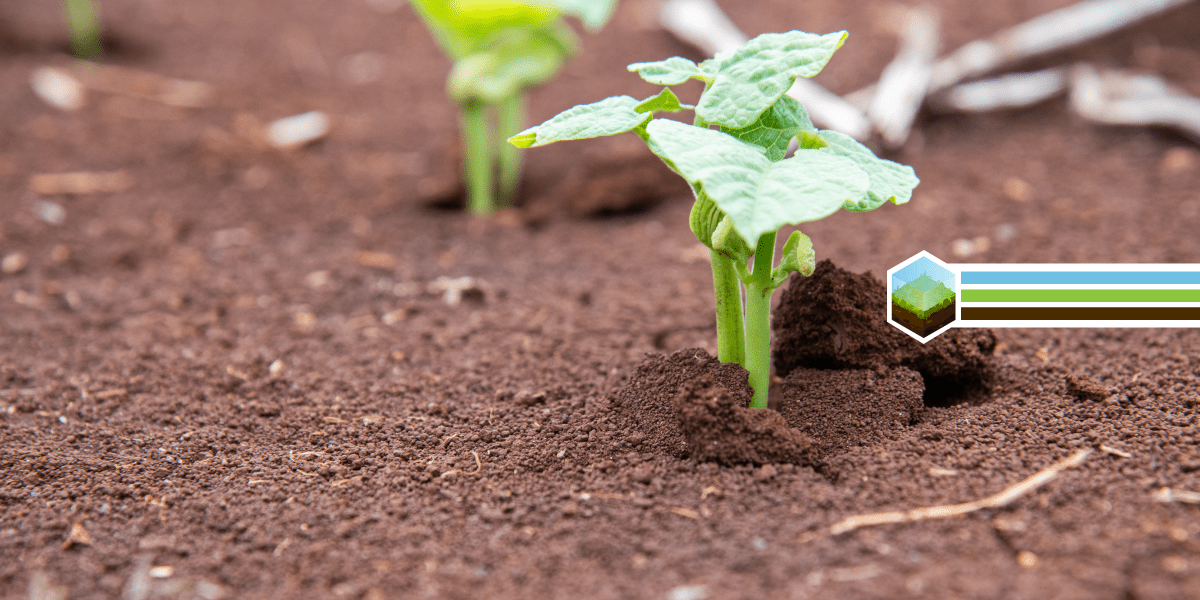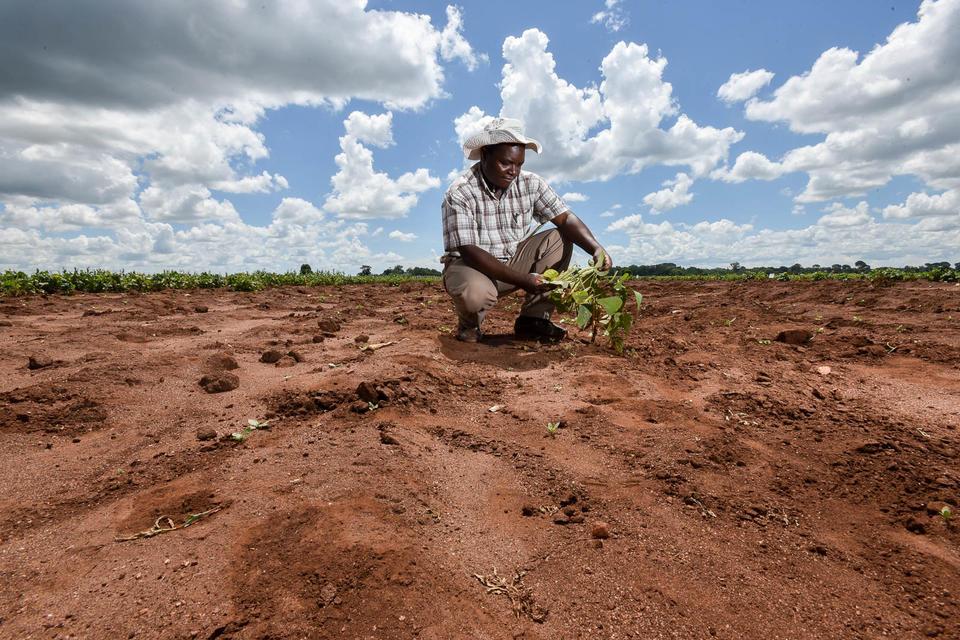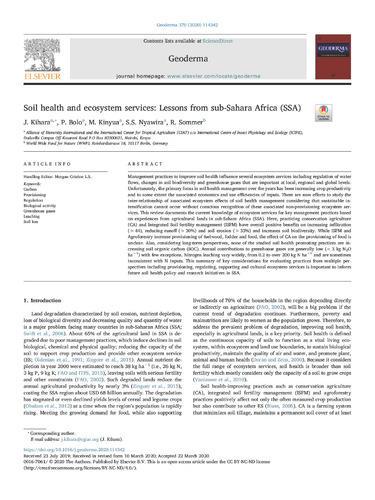Blog Nurturing Africa’s Soil Health: Towards Zero Soil Loss and Runoff

By uniting efforts to restore soil nutrients, we can ensure that farmers benefit from nurturing the land’s full potential. Approaching the Africa Fertilizer and Soil Health Summit, Alliance scientists weigh in on best practices to boost soil fertility across the region.
Soil erosion is sweeping away African farmers’ profits. With current soil degradation rates up to 100 times higher than the soil’s natural regeneration rate, farms are suffering from a widening crop yield gap that is estimated to cost Africa an annual loss of USD $68 billion.
The prevalence of soil erosion and runoff across 65% of cropland has seriously jeopardized the provision of ecosystem services, pushing our agricultural systems to “breaking point”, as indicated by the FAO. Rainwater not absorbed by the soil is lost via surface runoff, carrying away tons of soil sediments. With up to 650kg of nitrogen lost per hectare each year, crop yield losses have reached 70%. As a result, crop production has become a nutrient-intensive investment that millions of resource-poor farmers cannot afford. Consequently, affected households are pushed into unsustainable activities – such as deforestation – to earn a living.
We can expect erosion problems to intensify with the acceleration of climate change with an increasing trend of floods (duration, intensity, and frequency) across sub-Saharan Africa.
Reconciling on-farm Realities
John Lori – a farmer in Babati, Tanzania – bought two bags of topdressing fertilizer to apply across his four-acre maize field. However, before the plants were able to benefit from the fertilizer, runoff washed it away. Experiences like John’s, which can be the difference between profit or debt for farmers, underscore the need for soil restoration efforts.

John’s field with waterlogged maize due to poor soil and water conservation. Photo credit: Michael Kinyua/CIAT
Despite little publicity, micro-scaled soil restoration efforts are positively impacting soil health. In semi-arid Kongwa District, farmer Moshi Maille has adopted 'integrated soil fertility management practices', installed conservation structures such as tiered ridges, reinforced with agroforestry practices such as intercropping, boundary trees, shelter belts, wood lots and fodder grass strips. In the several years since implementing these regenerative practices, the rate of runoff was reduced through increased water infiltration. As a result, soil moisture retention has drastically increased, with retained nutrients bolstering the farm’s resilience from in-season droughts.
A current gap is the integration of soil conservation strategies in improved farm management practices. Bundling the two can ensure that the restorative efforts being employed are sustained. Farmer capacity building has often overlooked erosion control. For example, Loti Philemon Malekela – a farmer in Nghumbi village, Dodoma – shared how he has received training on good agronomic practices such as the use of quality seeds, fertilizer, weeding and the spacing of crops from his village’s farm extension officer. However, soil erosion and runoff continued to degrade his land.
“I heard about the farming practices adopted by Moshi Maile, and my farmer group visited him for trainings on nursery establishment and soil and water conservation. Since adopting some of these practices myself, my maize yield has increased from an average of three to 18 bags per acre, within a period of just five years. Integration of trees also helps me harvest up to one ton of fuelwood and diversifying my income”, said Loti. “Maile has made me a champion of sustainable agricultural technologies and a trainer of trainers who are reaching hundreds of farmers”, added Loti.
Loti’s farmer group is also raising more than 60,000 tree seedlings and has already sold seedlings worth USD $1,000 to Farm Africa and LEAD Foundation in one single year.
Similar inspirations can be traced across sub-Saharan Africa. Yacouba Sawadogo in Burkina Faso is known as 'the man who stopped the desert'. He received two international conservation awards for restoring 62 acres of eroded sloping land through agroforestry and natural regeneration using zai pits and stony cordons. Such practices can be scaled across sub-Saharan African countries, especially those constituting the 10% sloping land mass, 40-70% of which is in eastern and southern Africa and 60% which lacks conservation measures.

Woodlot on Moshi Maile’s farm in Tanzania’s semi-arid Kongwa district, conserving soil moisture through both water infiltration and retention. Photo credit: Eveline Massam/IITA.
Examples of Conservation Efforts and Gaps across Africa
One exemplary country is Rwanda, which is ranked among the 22 countries with the most severe land degradation. Half of its arable land has a slope >10˚ and a mean soil erosion rate of 250 t ha-1 yr-1. Recently, the country implemented its ‘Economic Development and Poverty Reduction Strategy II, 2013-2018' to expand irrigated arable land by 100,000ha by 2020, with 31,000ha of the land being slopes of 5%-55%. Regenerative strategies have been adopted by 90% of Rwanda’s coffee farmers, with positive effects on soil loss management. Despite the visible conservation benefits on coffee farms, only one third of highland areas under food crop cultivation have adopted conservation practices.
Evidence from central Ethiopia shows the potential of using soil bunds in reducing the average annual runoff (28%), soil erosion (47%), organic carbon loss (51.4%) nitrogen (48%), phosphorus (54%), and potassium (47%) within a three-year period. In other parts of sub-Saharan Africa, fanya juu terraces have reduced runoff by an average of 71%, with bench terraces, stone bunds, trash line and tied ridges reducing runoff by up to 57%.
Morocco also has a ‘Green Generation 2020-2030' strategy of implementing conservation agriculture practices into one million hectares of cereal crop land by 2030. With the objective of reducing soil erosion by 50% and sequestering 500,000 tons of carbon, Morocco's plan can be replicated in sub-Saharan Africa to increase impact. Besides conservation agriculture practices, 'integrated soil fertility management' has shown promising results across Africa, reportedly increasing rainwater infiltration by >44%, reducing runoff by >30%, and reducing soil erosion by >33%.
The Call to Action
Despite the development of many promising soil and water conservation innovations and multiple calls for action – such as the 2012 Rio+20 Summit’s declaration on striving to achieve a land-degradation neutral world in the context of sustainable development – their adoption across Africa is low. This could be influenced by various factors, including the level of awareness of the benefits of adopting these technologies.
Efforts to achieve the Sustainable Development Goals – specifically goal 15.3 on ‘Land Degradation Neutrality’ – are urgent. Simple soil health strategies such as proper fertilizer application, use of improved seed varieties, crop rotation, and soil and water conservation structures can be bundled and scaled to increase nutrient-use efficiency, crop productivity and profitability. Furthermore, practices that have proven to address the challenge of soil erosion and water runoff – such as the restorative, regenerative and agroecological practices demonstrated by the case studies above – should be widely promoted.
The rewards for adopting these conservation strategies will be achieved if their implementation plan is backed by the necessary policies and by-laws. Furthermore, capacity building and awareness raising should be carried out to increase knowledge and exposure to diverse conservation practices.
To support this effort, model farms – such as that of Moshi Maile – can be established to provide evidence of success in landscape rehabilitation and to capture interest in soil and water conservation. However, research institutions, development agencies and other stakeholders still require financial mechanisms to develop innovations and generate evidence on where where and how to scale these conservation strategies.
Related content

The Alliance at the Africa Fertilizer and Soil Health Summit 2024




